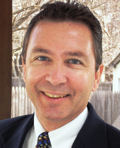 By Scott Kriner, Green Metal Consulting
By Scott Kriner, Green Metal Consulting
For years we have heard about the Living Building Challenge in the theater of sustainable building certifications. The LEED program is the “800 pound gorilla” in this category but the Living Building Challenge is self-proclaimed as “the world’s most rigorous and progressive building performance standard.”
Recently, the International Living Future Institute (ILFI) significantly increased their suite of other programs, beyond the Living Building Challenge program. The Institute now runs the Living Building Challenge, Living Community Challenge, Living Product Challenge, Net Zero Energy Building Certification, DECLARE, JUST and REVEAL. The Institute also educates, advocates and informs through their Research Library of reports, literature, and competition events.
The mission of the ILFI is “to lead and support the transformation toward communities that are socially just, culturally rich and ecologically restorative.”
The ILFI website (http://living-future.org) describes their vision in this way; “We believe that a compelling vision for the future is a fundamental requirement for reconciling humanity’s relationship with the natural world. Rather than advocating for incremental improvements to the built environment and the industries that interact with it, we define the desired outcome for the movement we serve: the cultivation of restorative ecosystems in which thriving communities benefit the biosphere as a whole.”
A good way to sum up their goal is to note a banner seen at the recent Living Product Expo that stated “Nature’s Genius – Your Innovation”.
The Living Building Challenge was launched in 2006 and since then over 250 projects have been registered. This Challenge program strives for energy positive designs, use of safe materials that are not on their list of chemical ingredients deemed to be toxic and harmful, and to collect and re-use water. It asks, “what if every single act of design and construction made the world a better place?” This program differentiates itself from other green building programs in that the certification is based on proven performance rather than anticipated or modeled performance.
The Living Product Challenge encourages the design and manufacture of products to be as efficient and harmless as nature. The inspiration for these products often comes from biomimicry and biophillia (the suggestion that there is an instinctive bond between human beings and other living systems). The manufacturer of a product in this program must be powered only by renewable energy and must have a program in place for conserving water.
The Living Community Challenge helps planners and developers design cities and communities by providing a review process at the master planning stage. This program was launched in 2014.
The NetZero Energy Building Certification program is a one of its kind program in that it verifies net-zero energy building performance after a 12-month period of occupancy. This program is actually one of three certification paths that are available in the Living Building Challenge. Net Zero Energy Buildings must comply with four imperatives in the Living Building Challenge. hose are 1) Limits to Growth, 2) Net Positive Energy, 3) Beauty and Spirit and 4) Inspiration and Education. Buildings in this program must use renewable energy for 100% of its energy needs.No combustion-based energy can be used.
Two other programs operated by the ILFI are the DECLARE and JUST programs.
As part of the growing interest in transparency, the DECLARE program allows a manufacturer to disclose the chemical ingredients in an open and standardized “nutrition label” format for display on packaging and on a manufacturer’s website. Those chemical ingredients cannot appear on the DECLARE Red List. That list includes 21 chemicals from A to V (alkylphenols to Volatile Organic Compounds [in wet applied products].
We are seeing more social equity issues and justice related to the human consideration of the green building industry. The JUST program of the ILFI is a voluntary disclosure program for all types of organizations. JUST is a call to social justice action. It is not a certification program but it allows for organizations to provide information about themselves related to the social equity of their companies. The categories in the JUST program include diversity, equity, safety, worker benefit, local benefit and stewardship.
The most recent initiative by the ILFI is the introduction of REVEAL. This program showcases buildings from around the world that are significantly more energy efficient than other similar types of buildings. The ratings are based on actual performance data. The buildings may be certified in other green building programs but they can be featured in the REVEAL database. Buildings in the REVEAL program are labeled and must be renewed every two years. The label can be used to indicate that the building is one of the most energy efficient in the world.
So the ILFI’s programs on buildings, products, and communities represent another sustainable building certification program. But it is clearly different from point-based LEED, and Green Globes programs and also different from the regulatory-based , ASHRAE 189.1 and the International Green Construction Code. With the emphasis on transparency, documented performance information and maintaining harmony with the environment, the ILFI is not your typical green building program.